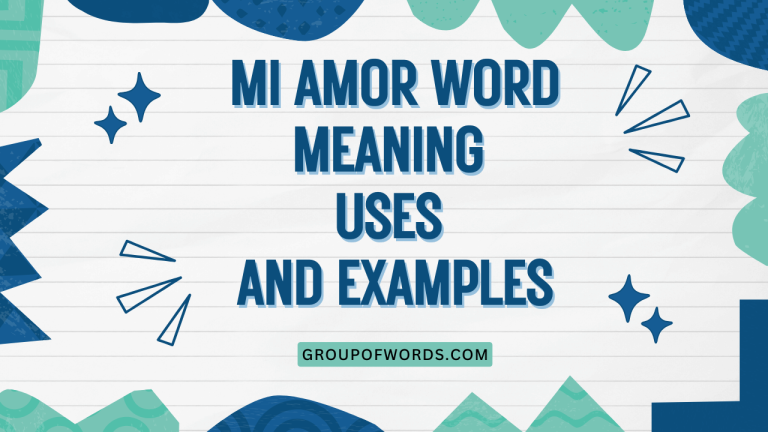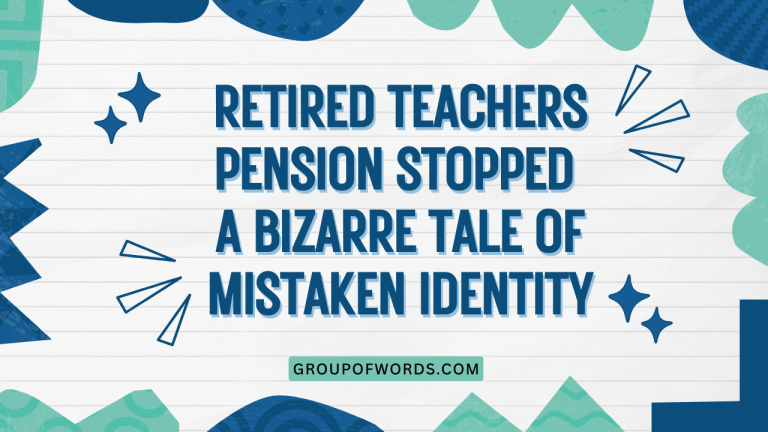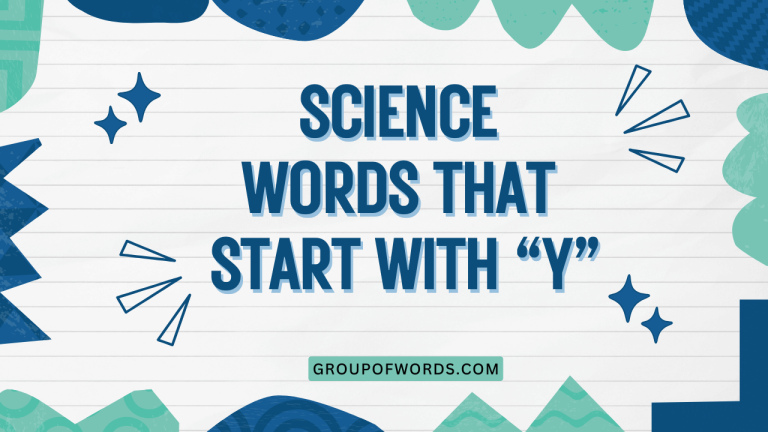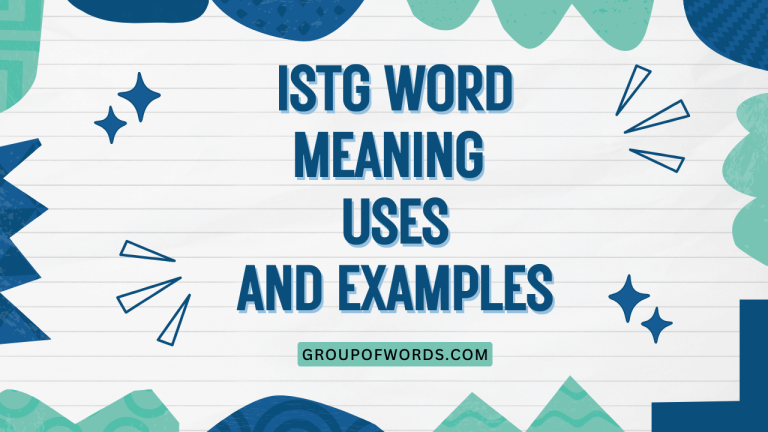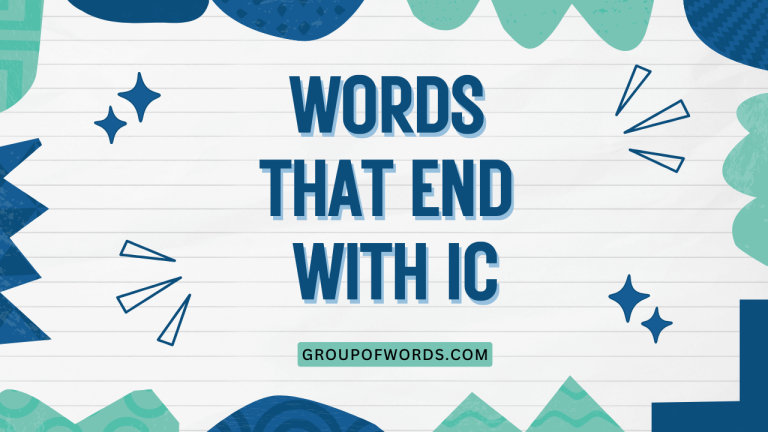More Than Just Teaching Students: Mastering ‘Than’
The word “than” is a small but mighty conjunction that plays a crucial role in making comparisons in English. While it might seem simple on the surface, using “than” correctly requires understanding its function, the structures it creates, and the common errors to avoid.
This article provides a comprehensive guide to mastering “than,” covering its definition, structural rules, various usages, and practical exercises to solidify your understanding. Whether you’re a student learning the basics or an advanced speaker aiming for precision, this guide will help you use “than” with confidence and accuracy.
Table of Contents
- Introduction
- Definition of ‘Than’
- Structural Breakdown
- Types of Comparisons with ‘Than’
- Examples
- Usage Rules
- Common Mistakes
- Practice Exercises
- Advanced Topics
- FAQ
- Conclusion
Introduction
Mastering the use of “than” is essential for clear and effective communication in English. This seemingly simple word is the cornerstone of comparative sentences, allowing us to express differences and similarities with precision.
Understanding its nuances is particularly important for English language learners, as incorrect usage can lead to confusion and miscommunication. This article will guide you through the intricacies of “than,” providing a solid foundation for accurate and confident use in both writing and speaking.
By exploring its definition, structure, and various applications, you’ll gain a deeper understanding of how to use “than” effectively in a variety of contexts. This understanding will not only improve your grammar but also enhance your overall communication skills.
Definition of ‘Than’
Than is a conjunction used primarily to make comparisons. It connects two unequal elements, showing that one thing possesses a quality to a greater or lesser degree than another. “Than” is used in comparative constructions, typically following comparative adjectives (e.g., taller, faster, more interesting) or adverbs (e.g., more quickly, less carefully). In essence, it establishes a relationship of inequality between two things being compared. Understanding this fundamental role is crucial for using “than” correctly in a variety of sentence structures.
The function of “than” extends beyond simple comparisons. It can also be used in expressions of quantity, identity, and preference.
For example, phrases like “more than,” “less than,” and “rather than” all rely on “than” to establish a comparative relationship. These broader applications highlight the versatility of “than” as a grammatical tool.
Recognizing these different contexts will enable you to use “than” with greater precision and fluency.
Structural Breakdown
The basic structure involving “than” is relatively straightforward: [Element A] + [Comparative Adjective/Adverb] + than + [Element B]. Element A and Element B are the two items being compared. The comparative adjective or adverb indicates the quality being compared. For instance, in the sentence “John is taller than Mary,” John (Element A) is being compared to Mary (Element B) in terms of height, with “taller” being the comparative adjective.
However, the structure can become more complex depending on the sentence. Sometimes, the verb or auxiliary verb is omitted after “than” if it is understood from the context.
For example, instead of saying “He runs faster than she runs,” we can say “He runs faster than she.” This omission is common in informal speech and writing but must be done carefully to avoid ambiguity. Understanding these structural variations is essential for constructing grammatically correct and stylistically appropriate sentences.
Another important structural consideration is the use of pronouns after “than.” Whether to use a subject pronoun (e.g., I, he, she, we, they) or an object pronoun (e.g., me, him, her, us, them) depends on the intended meaning. If the pronoun is the subject of an implied verb, use a subject pronoun. If it’s the object, use an object pronoun. For example, “He is taller than I (am)” versus “I like him more than her (I like her).” Paying attention to these nuances will ensure clarity and accuracy in your writing.
Types of Comparisons with ‘Than’
Comparative Adjectives
Comparative adjectives are used to compare two nouns. They are formed by adding “-er” to the end of short adjectives (e.g., tall, taller; short, shorter) or by using “more” or “less” before longer adjectives (e.g., interesting, more interesting; difficult, less difficult). The word “than” follows the comparative adjective to introduce the second noun being compared. This is the most common type of comparison using “than.”
Comparative Adverbs
Comparative adverbs are used to compare two actions or manners. Similar to comparative adjectives, they are formed by adding “-er” to the end of short adverbs (e.g., fast, faster; hard, harder) or by using “more” or “less” before longer adverbs (e.g., quickly, more quickly; carefully, less carefully). “Than” follows the comparative adverb to introduce the second action or manner being compared.
Comparisons of Quantity
“Than” is also used to compare quantities, often with words like “more,” “less,” “fewer,” and “as much.” These comparisons indicate the relative amount or number of something. For example, “I have more books than she does” compares the number of books each person possesses.
This type of comparison is frequently used in everyday conversations and writing.
Comparisons of Identity
In certain contexts, “than” can be used to make comparisons of identity, often involving preferences or choices. Phrases like “rather than” and “other than” fall into this category.
For example, “I would prefer to stay home rather than go out” expresses a preference for staying home over going out. These comparisons often involve contrasting options or alternatives.
Examples
Comparative Adjectives Examples
The following table provides examples of sentences using comparative adjectives with “than.” Each example illustrates how “than” connects two nouns being compared, with the comparative adjective highlighting the difference between them.
| Sentence |
|---|
| This book is more interesting than that one. |
| My car is faster than yours. |
| She is taller than her brother. |
| The weather today is better than yesterday. |
| A lion is stronger than a tiger, some say. |
| Coffee is more expensive than tea in that cafe. |
| Learning English is easier than learning Chinese for me. |
| This phone is cheaper than the one I saw yesterday. |
| The red dress is prettier than the blue one. |
| My house is bigger than my apartment. |
| Elephants are larger than horses by quite a bit. |
| Summer is hotter than spring in most places. |
| Gold is more valuable than silver right now. |
| A Mercedes is more luxurious than a Honda. |
| Hiking is more tiring than walking on flat ground. |
| This movie is longer than the first one we watched. |
| Classical music is more relaxing than heavy metal. |
| The new restaurant is closer than the old one. |
| My new job is more stressful than my old one. |
| The test was harder than I expected. |
| The mountains are higher than the hills. |
| A train is faster than a bus. |
| This cake is sweeter than the last one I made. |
| The city is busier than the countryside. |
| Math is more challenging than English for some. |
| The ocean is deeper than the lake. |
| Running is more strenuous than walking. |
| This car is more fuel-efficient than my previous one. |
Comparative Adverbs Examples
The following table presents examples of sentences using comparative adverbs with “than.” These examples demonstrate how “than” connects two actions or manners being compared, with the comparative adverb highlighting the difference in how they are performed.
| Sentence |
|---|
| He runs faster than she does. |
| She sings more beautifully than her sister. |
| He works more diligently than his colleagues. |
| She speaks English more fluently than she used to. |
| He drives more carefully than he did before the accident. |
| She learns more quickly than I do. |
| He eats more slowly than his brother. |
| She studies more effectively than her classmates. |
| He writes more clearly than she explains. |
| She dances more gracefully than she walks. |
| He performs more confidently than he used to. |
| She analyzes data more thoroughly than her predecessor. |
| He reacts more calmly than she would. |
| She invests more wisely than he spends. |
| He plans trips more meticulously than his wife. |
| She presents ideas more persuasively than he does. |
| He negotiates deals more skillfully than his partner. |
| She manages projects more efficiently than her predecessor. |
| He communicates emotions more openly than his father. |
| She approaches problems more creatively than her peers. |
| He researches topics more extensively than she does. |
| She organizes events more flawlessly than anyone else. |
| He adapts to changes more readily than his colleagues. |
| She handles stress more effectively than he does. |
| He resolves conflicts more diplomatically than his counterpart. |
Comparisons of Quantity Examples
This table illustrates how “than” is used to compare quantities, using words like “more,” “less,” “fewer,” and “as much.” These examples show the relative amount or number of something being compared.
| Sentence |
|---|
| I have more books than she does. |
| He spent less money than he planned. |
| There are fewer students in this class than in the last one. |
| I ate as much pizza than he did. |
| She drinks more coffee than tea. |
| I have more experience than he does in this field. |
| He earns less salary than he deserves. |
| There are fewer opportunities than there used to be. |
| I need as much support than I can get. |
| She has more patience than I do. |
| He needs less sleep than most people. |
| There are fewer errors than expected in the report. |
| I require as much information than possible before making a decision. |
| She has more confidence than she shows. |
| He takes less risk than his colleagues. |
| There are fewer problems than anticipated in the project. |
| I want as much freedom than I can have. |
| She invests more time than money in her hobbies. |
| He exerts less effort than he should. |
| There are fewer distractions than I thought there would be. |
| I need as much time than I can get to finish this. |
| She has more friends than I do on social media. |
| He uses less energy than the average person. |
| There are fewer cars than buses on the road in this city. |
| I want as much happiness than anyone else. |
Comparisons of Identity Examples
This table provides examples of sentences using “than” to make comparisons of identity, often involving preferences or choices. Phrases like “rather than” and “other than” are highlighted.
| Sentence |
|---|
| I would prefer to stay home rather than go out. |
| I have no choice other than to accept the offer. |
| He chose to study math rather than history. |
| There is nothing I want other than peace and quiet. |
| She would rather read a book than watch TV. |
| I’d prefer to walk rather than take the bus. |
| There’s nothing else to do other than wait. |
| He opted for a salad rather than a burger. |
| I have no alternative other than to agree. |
| She decided to work rather than relax. |
| They chose to hike rather than bike. |
| There is no one else other than you who can do this. |
| I would eat vegetables rather than meat. |
| He prefers coffee rather than tea in the morning. |
| I want nothing other than to be left alone. |
| She’d prefer to travel solo rather than with a group. |
| There is no other way other than to try. |
| He chose to speak honestly rather than lie. |
| I have no option other than to comply. |
| She decided to run rather than walk. |
Usage Rules
Subject Pronouns After ‘Than’
When a pronoun follows “than,” it’s important to determine whether a subject or object pronoun is appropriate. If the pronoun is acting as the subject of an implied verb, use a subject pronoun (I, he, she, we, they). For example: “He is taller than I (am).” The implied verb “am” indicates that “I” is the subject of the comparison.
Object Pronouns After ‘Than’
If the pronoun is acting as the object of an implied verb or preposition, use an object pronoun (me, him, her, us, them). For example: “I like him more than her (I like her).” Here, “her” is the object of the implied verb “like.” The choice between subject and object pronouns can significantly alter the meaning of the sentence.
Omitting Auxiliary Verbs
Auxiliary verbs (e.g., do, have, be) can often be omitted after “than” when the meaning is clear from the context. For example, instead of “She can swim better than I can swim,” you can say “She can swim better than I.” However, be cautious when omitting auxiliary verbs, as it can sometimes lead to ambiguity. Ensure that the intended meaning remains clear without the verb.
Parallel Structure
Maintaining parallel structure is crucial when using “than” in complex sentences. This means that the elements being compared should have the same grammatical form.
For example, if you are comparing two gerunds (verb forms ending in “-ing”), both elements should be gerunds: “Swimming is more enjoyable than running.” Failure to maintain parallel structure can result in awkward or confusing sentences.
Common Mistakes
One of the most common mistakes is confusing “than” with “then.” Than is used for comparisons, while then is used to indicate time or sequence. For example:
* Incorrect: He is taller then I am.
* Correct: He is taller than I am.
* Incorrect: I studied hard, then I got a good grade than I expected.
* Correct: I studied hard, then I got a better grade than I expected.
Another frequent error involves incorrect pronoun usage after “than.” Using an object pronoun when a subject pronoun is required (or vice versa) can change the meaning of the sentence.
* Incorrect: She is faster than me. (if the meaning is “She is faster than I am”)
* Correct: She is faster than I.
* Incorrect: I like her more than she. (if the meaning is “I like her more than I like her”)
* Correct: I like her more than her.
Finally, failing to maintain parallel structure can lead to grammatically incorrect sentences.
* Incorrect: He enjoys reading more than to write.
* Correct: He enjoys reading more than writing.
* Incorrect: She prefers to sing rather than dancing.
* Correct: She prefers to sing rather than dance.
Practice Exercises
Exercise 1: Fill in the Blank
Fill in the blank with the correct word: “than” or “then.”
| Question | Answer |
|---|---|
| 1. He is older ______ I am. | than |
| 2. I studied, ______ I went to bed. | then |
| 3. She sings better ______ her brother. | than |
| 4. First, mix the ingredients, ______ bake the cake. | then |
| 5. This car is faster ______ my old one. | than |
| 6. We ate dinner, ______ we watched a movie. | then |
| 7. He is more intelligent ______ she is. | than |
| 8. Add the sugar, ______ stir the mixture. | then |
| 9. My house is bigger ______ yours. | than |
| 10. I woke up, ______ I had breakfast. | then |
Exercise 2: Correct the Error
Identify and correct the error in each sentence. If the sentence is correct, write “correct.”
| Question | Answer |
|---|---|
| 1. She is taller then me. | She is taller than I. |
| 2. He runs faster than me do. | He runs faster than I do. |
| 3. I prefer to swim rather than running. | I prefer to swim rather than run. |
| 4. This book is more interesting then that one. | This book is more interesting than that one. |
| 5. He has less money than her. | He has less money than she does. |
| 6. Correct | Correct |
| 7. She sings better than him does. | She sings better than he does. |
| 8. I enjoy reading more than to watch TV. | I enjoy reading more than watching TV. |
| 9. He is a better cook then I am. | He is a better cook than I am. |
| 10. She likes him more than I like she. | She likes him more than I like her. |
Exercise 3: Sentence Combining
Combine the following sentences using “than.”
| Question | Answer |
|---|---|
| 1. John is tall. Mary is not as tall. | John is taller than Mary. |
| 2. I run fast. She runs faster. | She runs faster than I do. |
| 3. This book is interesting. That book is less interesting. | This book is more interesting than that book. |
| 4. He has money. She has less money. | He has more money than she does. |
| 5. She sings well. He sings better. | He sings better than she does. |
| 6. My car is fast. Your car is not as fast. | My car is faster than your car. |
| 7. I study hard. She studies harder. | She studies harder than I do. |
| 8. This cake is sweet. That cake is sweeter. | That cake is sweeter than this cake. |
| 9. He is smart. She is smarter. | She is smarter than he is. |
| 10. I like coffee. She likes tea more. | She likes tea more than I like coffee. |
Advanced Topics
Than with Gerunds
Gerunds, verb forms ending in “-ing” that function as nouns, often appear in comparisons using “than.” When comparing two activities, it’s essential to use gerunds to maintain parallel structure. For instance, “Reading is more relaxing than working.” Here, both “reading” and “working” are gerunds, ensuring grammatical correctness.
Than in Complex Sentences
In complex sentences, “than” can introduce subordinate clauses that provide additional information or context for the comparison. These clauses can add depth and nuance to your writing.
For example, “He is more experienced than I thought he would be.” The clause “than I thought he would be” provides further detail about the comparison, enhancing the overall meaning of the sentence.
FAQ
- What is the difference between “than” and “then”?
“Than” is used for comparisons, while “then” is used to indicate time or sequence. For example, “He is taller than I am” (comparison) versus “I studied, then I went to bed” (sequence).
- Should I use a subject or object pronoun after “than”?
Use a subject pronoun (I, he, she, we, they) if the pronoun is the subject of an implied verb. Use an object pronoun (me, him, her, us, them) if it’s the object. For example, “He is taller than I (am)” versus “I like him more than her (I like her).”
- Can I omit the auxiliary verb after “than”?
Yes, you can often omit the auxiliary verb when the meaning is clear from the context. For example, “She can swim better than I.” However, be cautious to avoid ambiguity.
- What is parallel structure, and why is it important with “than”?
Parallel structure means that the elements being compared should have the same grammatical form. It’s important to maintain clarity and grammatical correctness. For example, “Swimming is more enjoyable than running” (both gerunds).
- Is it ever correct to say “than me”?
In formal writing, “than I” is generally preferred when the pronoun is the subject of an implied verb. However, “than me” is commonly used in informal speech and writing, especially when the verb is clearly understood. For example, “He is taller than me” is acceptable in casual conversation, although “He is taller than I am” is more grammatically correct.
- How can I avoid confusing “than” and “then”?
A helpful mnemonic is to remember that “than” is used for comparisons, and both “than” and “comparison” have the letter “a.” “Then” is used for time or sequence. Practice using both words in sentences to reinforce their distinct meanings.
- What are some common mistakes to avoid when using “than”?
Common mistakes include confusing “than” with “then,” using incorrect pronouns after “than,” and failing to maintain parallel structure. Reviewing these common errors and practicing correct usage can help you avoid these pitfalls.
- How do I use “than” with gerunds correctly?
When using “than” with gerunds, ensure that both elements being compared are gerunds. This maintains parallel structure and grammatical correctness. For example, “Reading is more relaxing than working.” Both “reading” and “working” are gerunds.
Conclusion
Mastering the use of “than” is a crucial step in achieving fluency and accuracy in English. By understanding its definition, structural rules, various usages, and common pitfalls, you can confidently construct grammatically correct and stylistically appropriate comparative sentences.
Remember to pay attention to pronoun usage, maintain parallel structure, and avoid confusing “than” with “then.” With practice and attention to detail, you can elevate your English communication skills and express comparisons with precision and clarity. Continued practice and exposure to diverse examples will further solidify your understanding and enhance your ability to use “than” effectively in any context.


